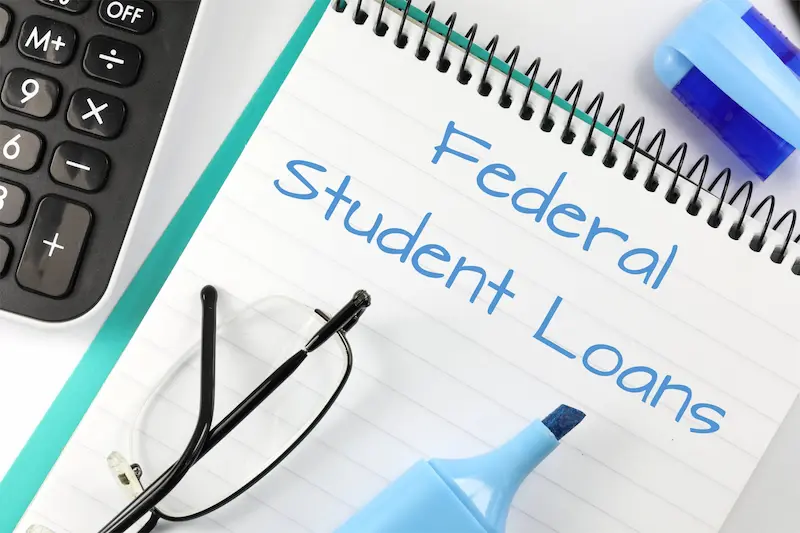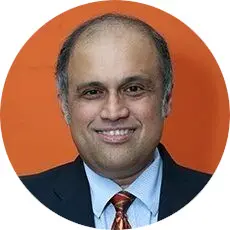
A student loan is an investment in a person’s future. Making wise financial selections for student loans requires, as with any investment, having a solid understanding of your available options. Making wise financial decisions for you and your family is essential, since your decisions can have several implications and long-term effects throughout life. Choosing the best low-impact financial solutions requires thorough research and knowledge of the full financial landscape of the risks and liabilities associated with higher education.
Understanding the Student Loan Options and the Student Loan Application Process
Borrowers have two loan options to choose from: federal loans (which have lower interest rates and are backed by the government) or private loans (that are not government-guaranteed and have substantially higher interest rates). Therefore, federal student loans are recommended first due to their substantial and generous benefits for the borrowers. They are also simpler to obtain because the borrower normally won’t have to submit to a credit check or find a cosigner.
Filling out a Free Application for Federal Student Aid, or FAFSA, is the initial step in getting a federal loan. Because the FAFSA also offers opportunities for grants, scholarships, and work-study programs—all of which are free financial assistance options with no repayment requirements—it may help students avoid loans completely. Federal student loans come in a variety of forms, including parent plus loans, graduate plus loans, direct subsidized, direct unsubsidized, and direct consolidation loans.
The U.S. Department of Education (ED) offers direct subsidized and direct unsubsidized loans to eligible students to assist them in paying for higher education at a four-year institution, community college, or trade, career, or technical school (Subsidized Loans and Direct Unsubsidized Loans are referred to informally as Stafford Loans or Direct Stafford Loans). The federal government will send money to the designated university to pay the student’s tuition fees if loans are proposed and accepted. If there are any leftover money, they will be given to the student. These funds may be used by a student to pay for additional costs incurred while obtaining a degree. Borrowers are approved for a subsidized loan based on financial need, and the government pays the interest that accrues during the grace period (which can be up to six months after graduation). Currently, before disbursement, the US Department of Education withholds an origination fee of 1.057%, and the fixed interest rate for 2022–2023 is 4.99%.
Both undergraduate and graduate students may apply for Direct Unsubsidized Loans, and proof of need is not necessary. Unsubsidized loans have no associated interest subsidy; therefore, interest continues to accrue while the borrower is still enrolled in school. Before disbursement, the U.S. Department of Education withholds a 1.057% origination fee. The interest rate for 2022–2023 is 4.99%; it is fixed for the life of the loan, and repayment is based on income. The student’s status (dependent versus independent) and the year of study (freshman versus graduate or post-grad student) have a significant impact on the annual and lifetime Stafford loan limits. All Stafford loan repayment usually starts six months after a borrower graduates. Depending on the repayment option selected, one typically has between 10 and 25 years to pay back the loan.
Compared to private loans, federal loans tend to have lower caps. The following limits apply to the typical lifetime of federal direct loans: undergraduate dependent borrowers can only borrow a subsidized loan up to $23,000 and a combined/total (subsidized and unsubsidized) loan amount of up to $31,000, while undergraduate independent borrowers can borrow up to $57,500 in total (subsidized and unsubsidized). Additionally, the subsidized borrowing limit for graduate students is $65,500, and the combined/total (subsidized and unsubsidized) borrowing limit is $138,500. A private loan might also be required to pay for any expenses that federal financing couldn’t.
When you finally graduate, it’s typical to have 8–10 student loan payments due each month because most students obtain loans from various lenders each year, if not every semester. Based on the borrower’s capacity to repay, the Direct Consolidation loan has various options and a fixed interest rate, in order to consolidate student loans into one payment, for which there is no fee. Although it can result in reduced monthly payments, it might also result in a longer loan repayment period. The frustration of having to keep track of numerous due dates for varying amounts to various lenders is reduced by direct consolidation loans. The primary negative of the Direct Consolidation Loan scheme is that one can end up spreading out payments over a longer period of time and consequently paying more in interest on the debt. Additionally, some of the advantages provided by the initial loan, including eligibility for loan forgiveness programs and interest rate breaks, could be lost.
Federal loans known as Direct PLUS (Parent Loan for Undergraduate Students) loans are accessible to parents and graduate students. Parents of dependent undergraduate students are eligible for Parent PLUS loans, whereas graduate students are eligible for Graduate PLUS loans. Money from a PLUS loan is first sent to the school, which uses it to pay for things like tuition, room and board, fees, etc. Any money that is left over is paid out directly to the parent or the student. The student must be a dependent of the parent or, in some situations, a step-parent or grandparent in order to qualify for a parent PLUS loan. A credit check is typically required for parents to qualify for a PLUS loan. Parents can borrow the entire amount needed for the student’s education minus the other aid, and are permanently responsible for repaying the loan. The origination charge for PLUS loans is 4.228%, and the interest rate is 7.54%. (2022-2023) In general, once the complete loan has been disbursed, payment on a PLUS loan must start. Additionally, graduate or professional students at a school that qualifies can apply for PLUS loans on their own behalf, commonly known as Grad PLUS loans. They have comparable criteria for eligibility as the parent PLUS loan. They can choose among income-driven repayment options, where their monthly payment is determined by their salary and the size of their family. Grad PLUS borrowers typically have between 10 and 25 years to pay back their loans, depending on the repayment option they select.
Banks offer private student loans, but the application procedure is more difficult. The lender will likely need a parent to co-sign the loan after examining your income and credit score. They charge fees and have a strict repayment schedule. Private loans may not be tax deductible, and their interest rates may be fixed or variable and rise over time. As of September 2022, the 10-year fixed interest rate is 7.06%, the 5-year variable rate is 6.77%, and the monthly payment amount for your loan will remain the same during the duration of the loan. Each lender has a different maximum loan amount. However, typically one cannot withdraw more than the total cost of attendance at your institution. Generally, private loans have substantially higher interest rates that start accruing right away and don’t stop until they are fully repaid.
The objective should be to avoid student loans or potentially take out as little of them as possible because all student loans come with a financial barrier and weight. It is important to first completely utilize the financial help, work-study, and scholarships that are offered in order to save money. It is clear that information, research, and financial literacy are important as a part of preparing for higher education, since early planning/strategizing for the financial costs of higher education is crucial.


 Raj Mehta – Financial Education Instructor
Raj Mehta – Financial Education Instructor